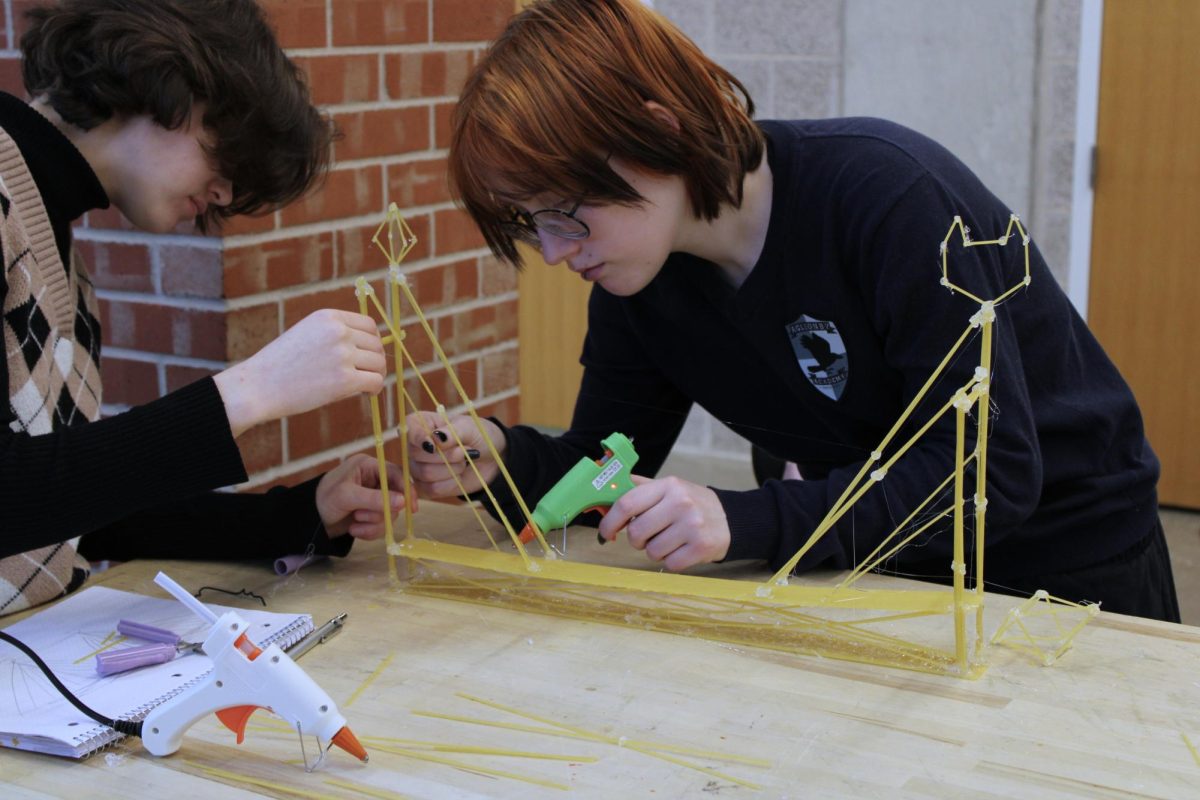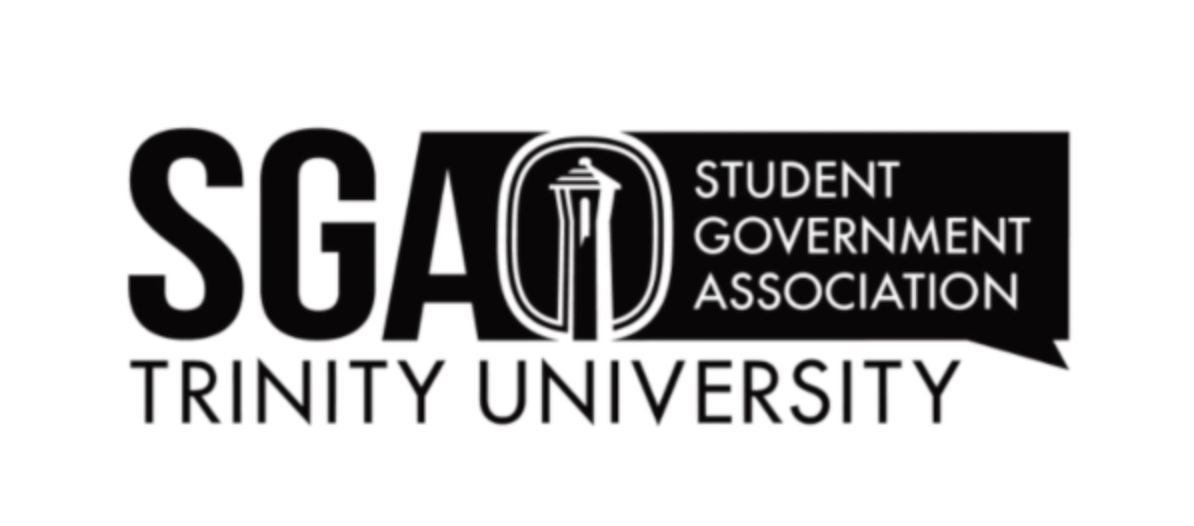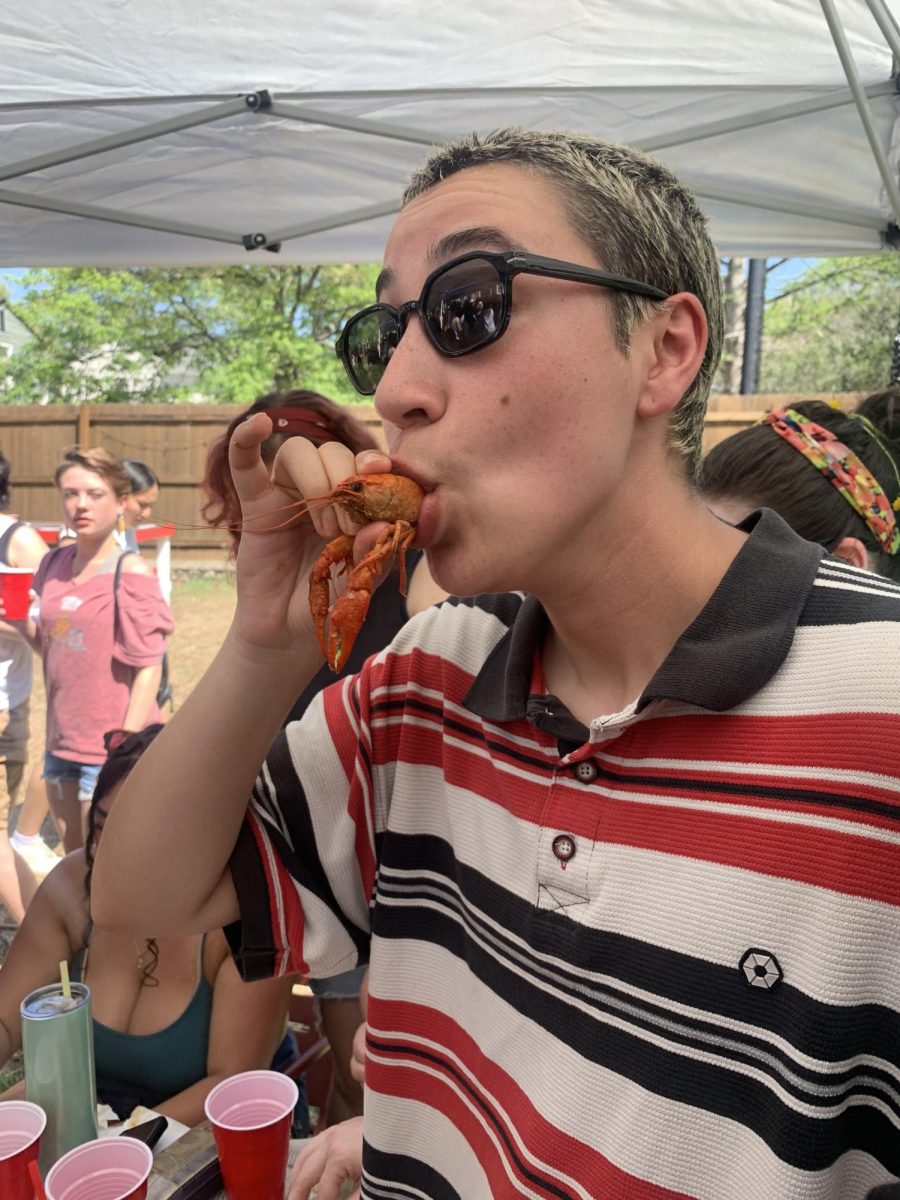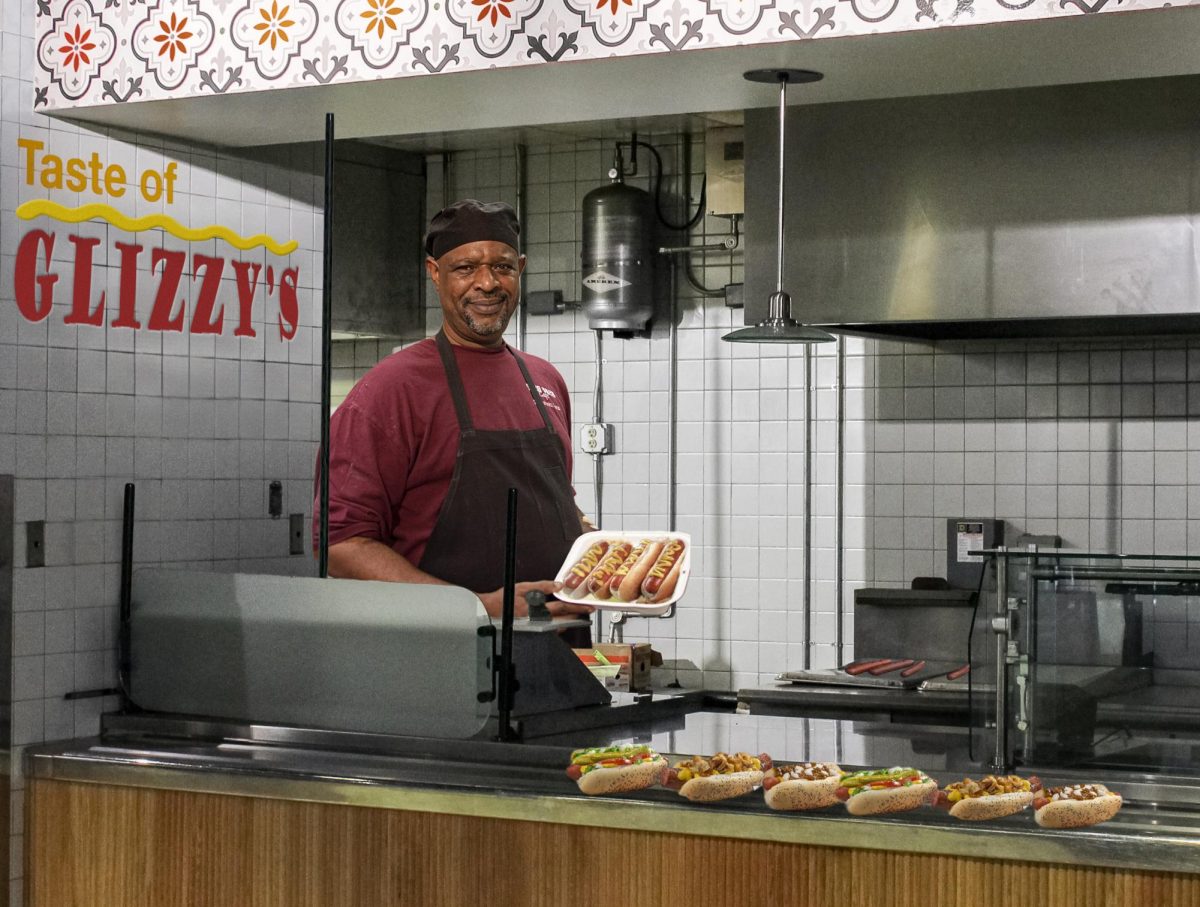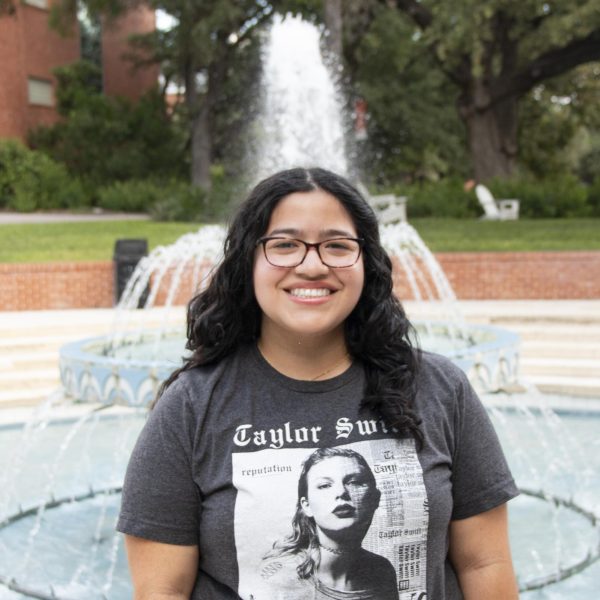Trinity’s ASME student chapter held its first Spaghetti Bridge contest on Feb. 21. Teams were tasked to make functional bridges with uncooked spaghetti and glue.
Spaghetti Bridge contests are a common activity to teach elementary to high school students the fundamentals of engineering design. While college students already know these fundamentals, the Spaghetti Bridge contest is a new way to use these skills and celebrate engineering. Feb. 16-22 was National Engineering Week, and the Spaghetti Bridge contest concluded Trinity’s celebrations this year, following a series of engineering presentations from student researchers earlier that week.
ASME allowed students of all majors to compete and did not require engineering experience. Dawson Durr, junior engineering science major and ASME president, participated in a Spaghetti Bridge competition in eighth grade. He wanted to allow students to display their creativity.
“Now that I’ve learned how trusses and bridges actually work, what if I put together a Spaghetti Bridge competition and see kind of how they all turn out? To see how college students can do this versus middle school students,” Durr said.
The rules were to make a bridge out of spaghetti and glue in two hours. Teams were allowed to make any design they wanted. Three teams, nine people, nine pounds of spaghetti and a lot of hot glue later, the teams finished constructing their bridges. To test each design, students used a force gauge and pulled downwards through the bridge until the design snapped.
The winning team’s bridge snapped at 21.5 Newtons, with the second place bridge snapping at 14.6. Any onlookers observing the contest from afar would’ve heard the words “truss” and triangles during the building phase. Some teams had a vague plan for the contest, knowing that they would make use of triangles since they are considered one of the strongest geometric shapes. The bridges took shape as the competition progressed, withsome teams adding decorative elements such as diamonds or cats.
Participants with engineering backgrounds used the skills they’d learned about efficient construction in their college classes. Grace Robertson, junior engineering science major and vice president of ASME, was on the winning team and incorporated ideas she learned in her classes.
“We kind of used the engineering principles that we learned in statics and dynamics, and truss analysis. So yeah, that’s where our bridge ideas came from,” Robertson said.
The limited rules and competitive aspect enticed participants. Madeleine Toland, first-year engineering science major and second place team participant, appreciated the low-stakes environment to celebrate the end National Engineering Week.
“It was really nice and fun. I think it’s great to cap it off with something entertaining, not just all learning,” Toland said. “It helps make engineering accessible to other majors. We’ve had a lot of Lunch and Learns, but if you don’t know engineering vocabulary, you’re just like, what’s happening?”
ASME also hosts an annual gingerbread competition, where teams sign up to create gingerbread houses. This last December, 50 students participated, with a total of 14 teams, six of which were composed of non-engineering majors. The Spaghetti Bridge competition is another way for students from different disciplines to meet each other in a fun setting, Durr stated.
“We had eight teams of engineering students and six teams of non-engineering students who we had never met before, so that was a lot of fun,” Durr said. “We’re really trying to get more events like that because we want it to be more than just engineering students involved.”
Since the Spaghetti Bridge contest was open to all majors, it allowed more students to express themselves. Anakin Becker, first-year undecided major, enjoyed the contest even though they aren’t a STEM major.
“You don’t have to be in STEM to enjoy doing STEM things,” Becker said. “The classes are so serious. I don’t want to learn about trusses. I just want to make something silly.”

